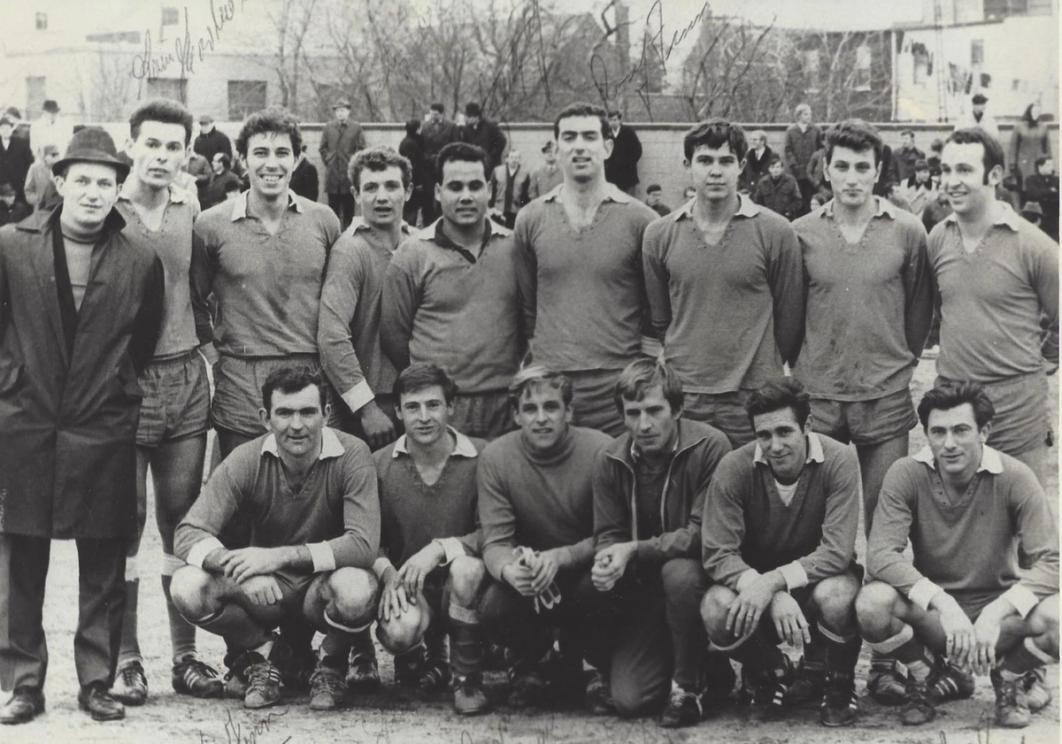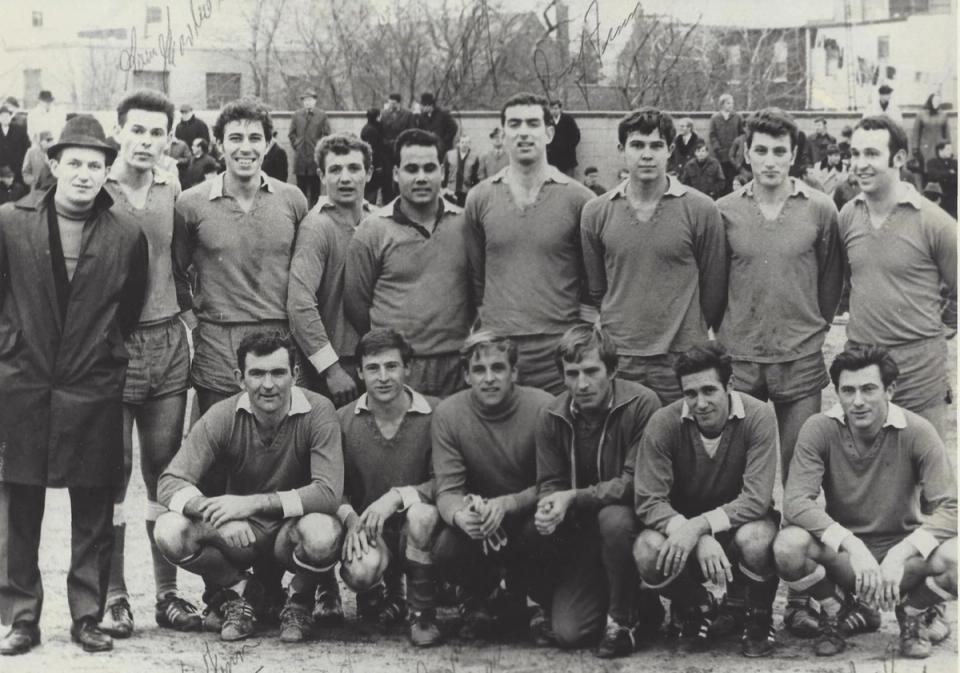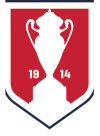The Oval & the Open Cup: Making History in Maspeth, Queens
Join us for a look back at the fabled Metropolitan Oval in Maspeth, Queens – four-time U.S. Open Cup Final venue and a space that’s become the stuff of legend, lore and heady exaggeration.



New York City has a way of devouring its athletic past. Search for Ebbets Field or Downing Stadium and you’ll find little trace, despite their storied histories. But when it comes to the Metropolitan Oval – the site of decades’ worth of Open Cup matches, along with visits from overseas giants the likes of Bundesliga side VfB Stuttgart – the space endures.
You just need to know where to look.
That isn’t intended as a kind of secret message; instead, it’s very literal. Travel down a stretch of sidewalk in Maspeth, Queens a block away from the Oval and you might never realize how close you were to it — much less that thousands of people once crowded in there for Finals, local league contests and friendlies over the years.
That secretive quality doesn’t just apply to the Metropolitan Oval today, as former US Men’s National Team captain Mike Windischman – who played there during his time on the Brooklyn Italians – can attest.
“Bruce Murray came down for a game (the USMNT forward and Hall of Famer was from Maryland with all its country clubs),” Windischman recalled. “He took a taxi there and if you’re not from there and don’t know your way around you’ll never find the Oval. I see him running from like four blocks away with his gear and he tells me the cabby kicked him out of the taxi — he couldn’t find his way in.”
Murray’s ill-fated cab ride is only one small part of the Open Cup’s history with the Metropolitan Oval. The field has occupied the site for almost a century. (Confusingly, another Metropolitan Oval in the city — this one located in the Bronx — also hosted games in the first half of the 20th century.) Looking back over his time at Queens’ Metropolitan Oval, Werner Roth recalled playing for the N.Y. German-Hungarians in the 1960s and early 70s.
“The further into the season you went, the more fans would start to show up,” Roth said of playing in the old German-American League, now known as the Cosmopolitan League. “Play-off games and championship games, Open Cup games, were the best turnouts. You have 2,000 or 3,000 people coming out for those. [German-Hungarians] were always good and the Greeks were always big rivals.”
At times the atmosphere could get contentious. “Sundays on the Oval were a lot like political rallies,” Roth said. “People came out with their flags. Referees took their lives into their own hands by stepping out onto that field. There was a lot of passion. Police were often on site or sometimes they were called during the game when things got a little out of hand. They were tough games, and everyone wanted recognition. They wanted to prove they were the best. ”
The Metropolitan Oval hosted multiple Open Cup Finals over the years. The first came in 1951, with the second of two matches to determine the Cup winner. The first leg, held at Pennsylvania’s Bridgeville Park, saw Roth’s future club, N.Y. German-Hungarians SC down 2-4 against Heidelberg SC. The local side eventually evened things up and then some, winning the second leg (and the national prize, known at the time as the National Challenge Cup) by a 6-2 score.
Twenty-nine years later, the Met Oval hosted its last Open Cup Final to date in 1980, when the New York Pancyprian-Freedoms defeated five-time champions Los Angeles Maccabee SC by a 3-2 score after extra-time, with Nick Kritikos’s goal proving decisive. It was the third time in a ten-year period that the field hosted the Cup Final; a New York Times article on the 1974 Cup Final described 2,000 spectators gathered there to watch New York Greek-Americans defeat Chicago Croatian by a score of 2-0.
In that match, Greek-Americans coach Nick Tonorezos — who had previously won the Open Cup multiple times as a player — sounded ecstatic at the final whistle, telling the Times, “It's the greatest thrill of my life. I love the whole world. It's just beautiful.”
Two years later, the local side in the Final didn’t fare quite so well. A goal from Andy Ateugbu – the Nigerian-born All-America selection from the University of San Francisco – was all it took for San Francisco IAC to defeat New York Inter-Giuliana in 1976.
Around the turn of the most recent century, the Metropolitan Oval underwent a significant renovation campaign. And while many of the players looked back fondly on yesteryear’s games themselves, they didn’t exactly have great things to say about the actual field. Remember Windischman’s story about Bruce Murray’s harrowing cab ride? Well, there’s one last part to it.
“Before he came down I told him it was all grass, so he brought all his studs, and then he saw that it was all dust and rocks,” Windischman said. “I had a good laugh about it.”
Dr. Joe Machnik, who won the Open Cup as the back-up goalkeeper in 1965 with the New York Ukrainians, had similar issues with the pitch. “It wasn’t like playing on a manicured pitch or anything like that. You had to handle the bounces. You had to adjust and adapt,” he said. “The field was narrow too and you just had to suck it up.”
Walter ‘Walt’ Schmotolocha, Machnik’s teammate on that Open Cup-winning team and a former USMNT striker, had similar feelings about the Metropolitan Oval – and many of the other fields tucked away in dark corners of New York City’s five boroughs. “Those days you had to control the ball, you didn’t know which way it was gonna go, then you had to manipulate it,” Schmotolocha recalled. “It was like running an obstacle course. You had to improvise all the time. It was different every time. The ball never bounced the same way twice.”
The Ukrainians’ 1965 Cup win came against Chicago Hansa, with the first leg taking place in Queens and the second leg in Chicago – where the New York side emerged as victors. (“They had a little stadium with a flat field, really nice, we didn’t have to run the obstacle course,” Schmotolocha said of that decisive away leg in Illinois)
Manfred ‘Manny’ Schellscheidt, a former U.S. Men’s National Team and Olympic coach, who ran the men’s program at Seton Hall through four decades, remembered walking the Metropolitan Oval – the Manhattan skyline off in the middle distance – to dig out the larger stones.
“We called it the work party,” smiled Schellscheidt, a two-time Open Cup champion with New Jersey’s S.C. Elizabeth (1970 and 1972), of club members lugging rocks off the playing surface before games. “You had to battle everything to play in those days.”
Not everyone whose career took them to the Metropolitan Oval had grim recollections of the conditions there. Werner Roth, whose time playing for the N.Y. German-Hungarians and the New York Cosmos spanned 1966 to 1979, felt that rumors of the field’s challenges were, as the saying goes, greatly exaggerated.
“Stories about how bad the field was get worse every time. I swear nowadays you hear people talking about boulders rolling at you while you were running and huge spikes sticking out of the ground the size of a shin guard,” Roth said. “It’s all been pretty exaggerated. But the Oval was a great place to play. It wasn’t as bad as some people would have you believe.”
That hidden-away quality of the Metropolitan Oval can make it difficult to find, but that doesn’t mean that the surrounding community was unaware of it — quite the reverse, in fact. John Kowalski, who played in the Open Cup in the 1960s before going on to a long career as a coach, recalled the space as being at the heart of the community.
“When I first came to the States from Poland, I began playing with the German-Hungarians,” he said. “I lived in Ridgewood, Queens, where there were many immigrant families like mine, and the Metropolitan Oval and the games that were played there were an important part of our lives and the life of the neighborhood.”
Windischman, whose mother immigrated to the United States from Germany, agreed. “In that neighborhood, soccer was the most popular sport and the Met Oval was the middle of all of it.”
The aforementioned renovations have modernized the Oval from the conditions that made it infamous among players, and the soccer academy that now calls the field home has an affiliation with nearby MLS club New York City F.C. But the memories of its bygone decades still endure – and inspire nostalgic memories from the men who sought the Open Cup there in their playing days.
“You had the whole city skyline there and there was always a game going on,” Windischman said. “There was that iron rail that went all the way around the field, so when you got tackled you went flying into it. You had the trains going by all the time and the dust kicking up.”
That’s one way to phrase things. He also provided a more concise way of thinking about the space: “There was something magical about the Met Oval.” That magic is still there — as long as you know where to look.
Tobias Carroll is a Brooklyn-based writer and the author of four books, most recently the novel Ex-Members. He's on X/Twitter at @tobiascarroll, and is also on Instagram at @tobiascarroll.




